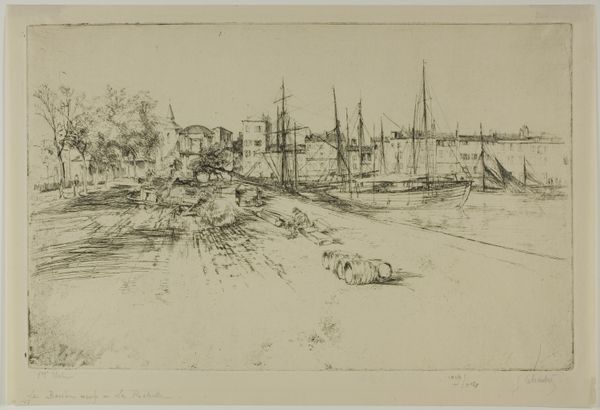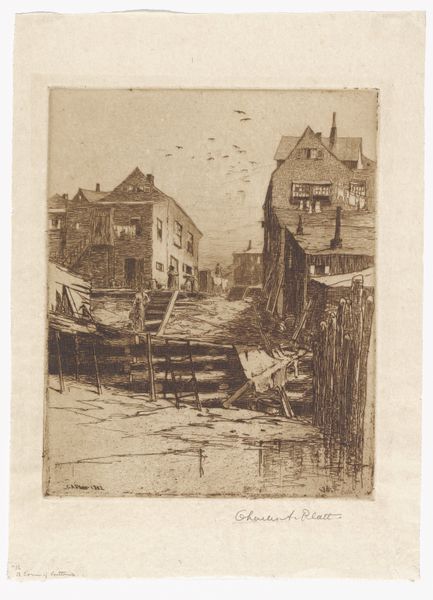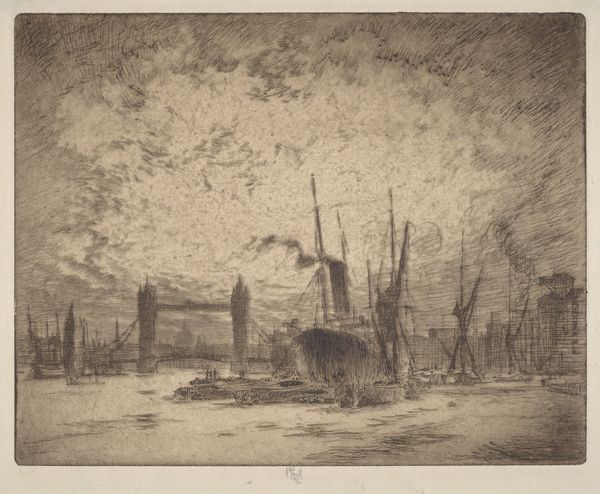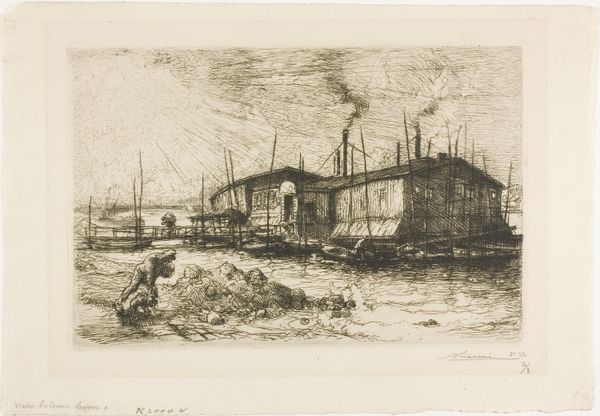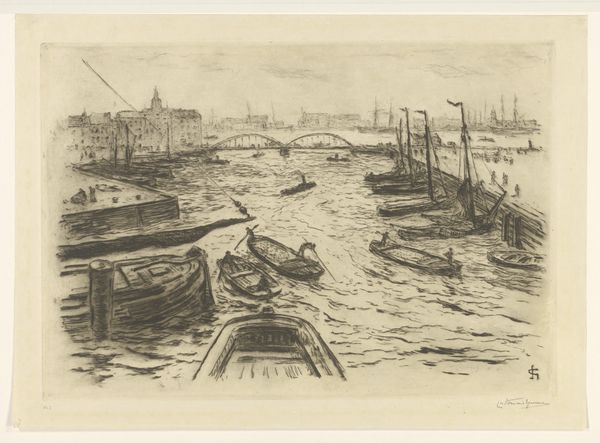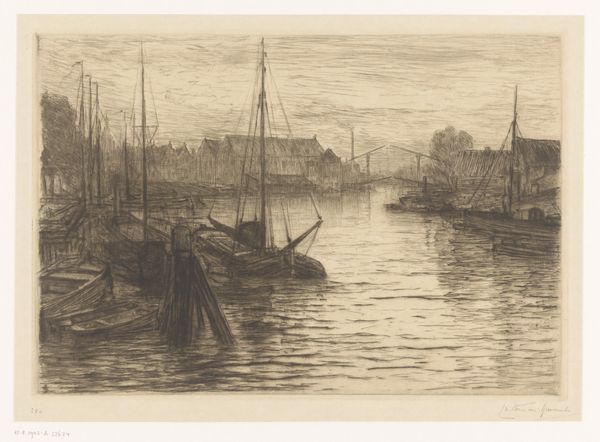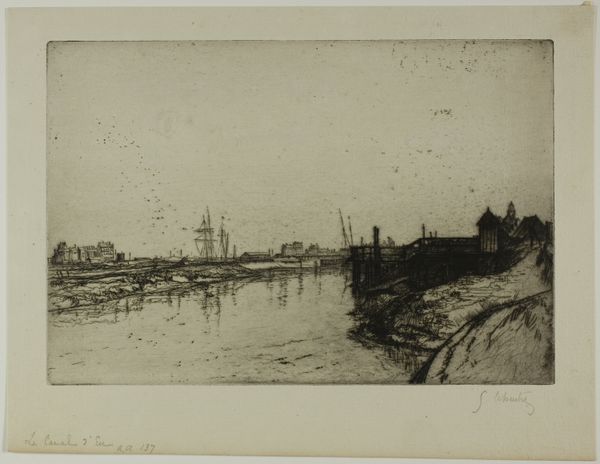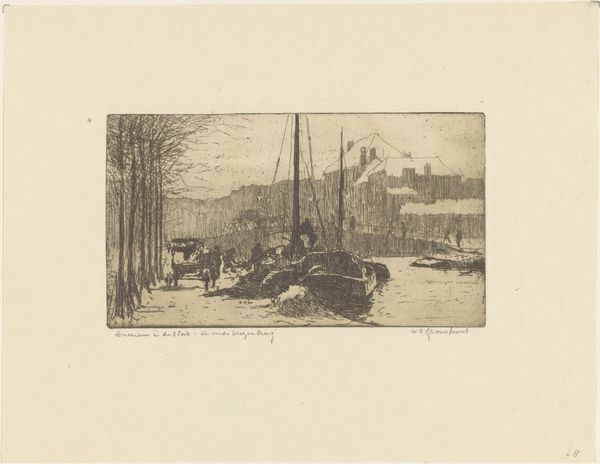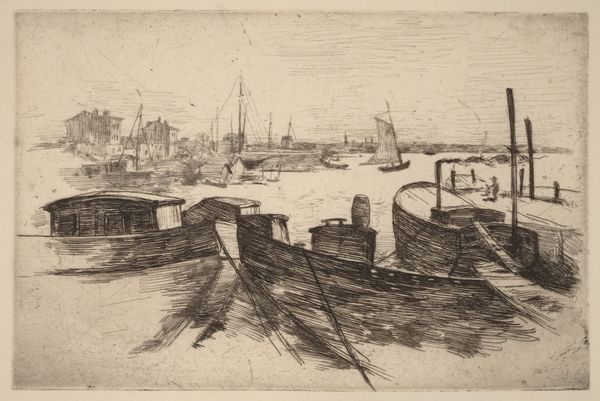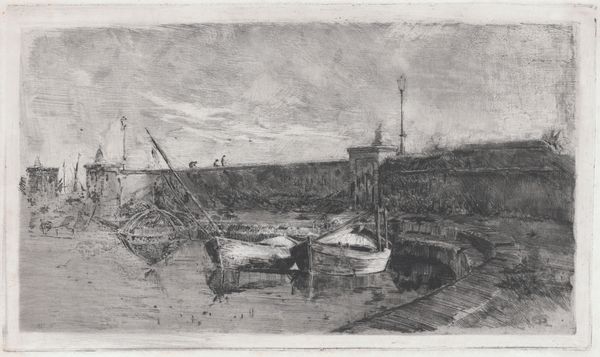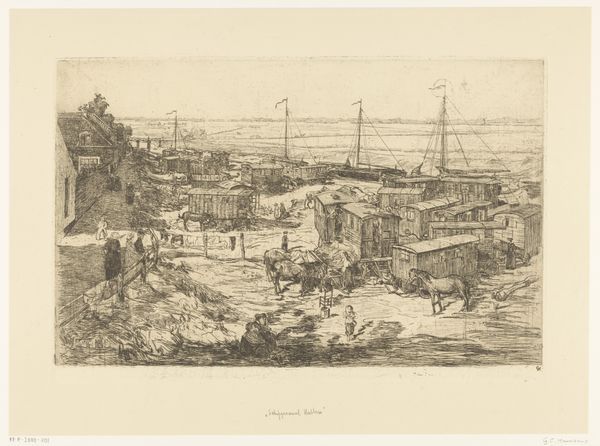
print, etching
# print
#
impressionism
#
etching
#
landscape
#
cityscape
Copyright: National Gallery of Art: CC0 1.0
Editor: So, this is "Scene in a Dutch City with Pile Driver in Foreground," a print by George Hendrik Breitner. It's done with etching. It feels very industrial, like a snapshot of a working city. What do you see in it? Curator: Well, consider Breitner's context. He worked in a period of intense urbanization. Cities like Amsterdam were rapidly changing. Think about how the imagery of labor and construction impacted the social consciousness. It makes you wonder, doesn’t it, what Breitner intended to capture about Amsterdam during this time. Editor: So, it’s not just a scene; it's a statement about urban growth? Curator: Possibly. The inclusion of the pile driver, dominating the foreground, is quite deliberate. It's not a picturesque, romantic view of the city, is it? It’s rough and busy. This focus, which almost rejects romanticism, was very relevant to discussions in artistic and intellectual circles, when ideas such as modernism began to bloom. Editor: That makes sense. I hadn’t considered the rejection of romanticism. I was mostly struck by the subject matter. It's such an ordinary slice of city life. Curator: Exactly. He turns a mundane construction site into something worthy of artistic attention. We see this impulse recurring throughout art history as cities take center stage in the modern era. Did this change your perspective on urban landscapes? Editor: Definitely! It’s made me rethink how everyday scenes can reflect deeper social changes. Thanks! Curator: My pleasure! I'm glad we could unpack some of its cultural implications together.
Comments
No comments
Be the first to comment and join the conversation on the ultimate creative platform.
